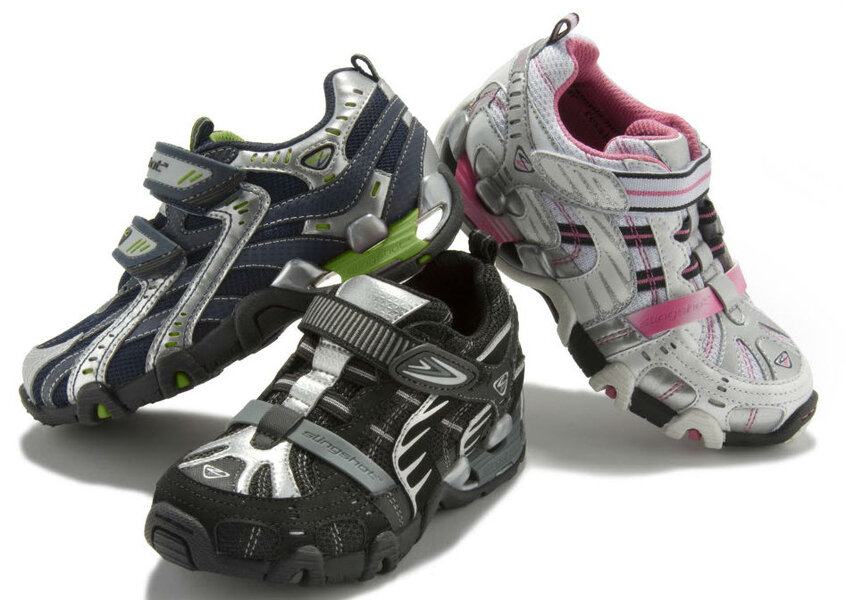Kids’ shoe stores: Boys are superheroes and girls are princesses
Loading...
A few days ago, Melissa at Pigtail Pals wrote about a conversation she overheard, in which her 6-year-old daughter’s classmate insisted that sparkly shoes are not for playing – they’re for looking pretty:
“Your shoes are ugly,” said the kindergarten classmate.
“No they are not,” replied the 6-year-old Original Pigtail Pal, Amelia.
“They are. Look how pretty mine are,” the classmate taps her toes for emphasis.
“They are the same pair of shoes. Like the exact same,” explains Amelia.
“They aren’t the same. Mine still have all of the pretty sparkles. I didn’t get them messed up,” boasted the girl, in full sparkle. [...] “Amelia, you should care a little bit about being pretty or you won’t get a boyfriend,” says the classmate.
Where do young girls get the idea that it’s more important to keep their sparkly shoes looking pretty than to play? Let’s consider Stride Rite’s marketing strategy for its play shoes (ie, sneakers), which I recently witnessed at a Stride Rite store near me.
For girls: The instruction to “sparkle with every step.” (Like pretty Cinderella, whose glass slippers were really impractical but helped her find romance.)
For boys: “Look out! Here comes Spiderman!” (Active, energetic, powerful.)
A quick review of StrideRite.com reveals more of the same: girls are meant to be looked at, so their play shoes are a route to prettiness, while boys are meant to be active, so their play shoes are made for play. Excerpts from the gallery:
- Cinderella sneakers “transport your little princess to a world of fantasy”
- Hello Kitty Keds are “the cutest sneakers on the block”
- Glitzy Pets sneakers help girls “to really shine and steal the show”
- Spiderman sneakers offer “light-up powers,” “no matter what kind of web he spins”
- Star Wars sneakers with “lighted technology” are good for “your little adventurer’s feet”
- Lightning McQueen sneakers, also with “lighted technology,” let boys “be as fast as the legendary Cars Lightning McQueen on-and-off the track”
In other words, Stride Rite’s marketing strategies – like other companies’ – reinforce the sex role biases that keep boys active and girls passive. As Colette Dowling has argued, these biases are at the root of the Frailty Myth: Boys learn “to use their bodies in skilled ways, and this gives them a good sense of their physical capacities and limits. [...] Girls hold themselves back from full, complete movement, Although it’s usually something girls are unaware of, they actually learn to hamper their movements, developing a ‘body timidity that increases with age.’”
I’ll give Amelia from Pigtail Pals the last word: as she told her friend, “You should care less about being pretty and more about playing with us. My mom says there’s lots of different ways to be a girl.”
Well said, Amelia!
Marketers: You would do well to take this same advice: care less about girls being pretty and more about their play.
The Christian Science Monitor has assembled a diverse group of the best family and parenting bloggers out there. Our contributing and guest bloggers are not employed or directed by the Monitor, and the views expressed are the bloggers' own, as is responsibility for the content of their blogs. Rebecca Hains blogs at rebeccahains.wordpress.com.








